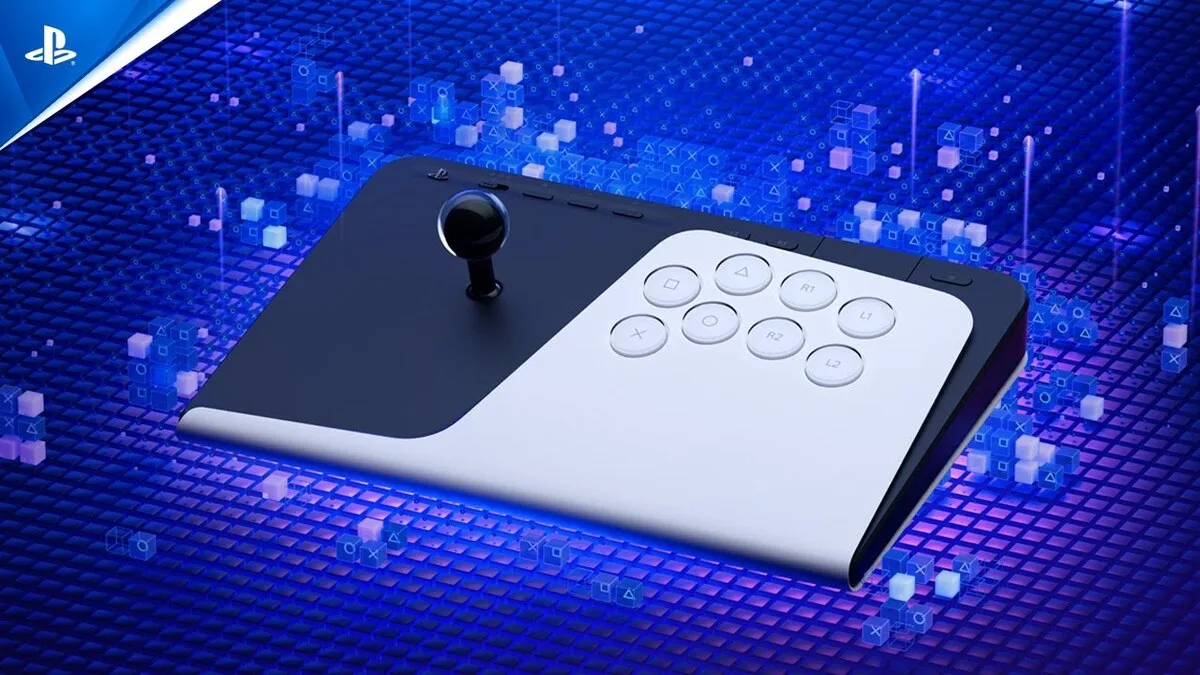Sony’s unveiling of the FlexStrike Wireless Fight Stick marks a pivotal moment in PlayStation’s hardware history. For the first time in its three-decade legacy, PlayStation is releasing an official first-party fight stick, designed from the ground up for competitive fighting game fans. But this isn’t just a peripheral—it’s a statement. A culmination of Sony’s slow but deliberate expansion into specialized hardware, and a nod to its roots in redefining how we play.
Previously known as Project Defiant, the FlexStrike was officially named just ahead of EVO 2025, the world’s premier fighting game tournament—now owned by Sony itself. Scheduled for release in 2026, the FlexStrike is compatible with PS5 and PC, and features:
- Mechanical switch buttons for precision input
- Toolless swappable restrictor gates (square, circle, octagon)
- PlayStation Link wireless tech for ultra-low latency
- Dual FlexStrike pairing via a single USB adapter
- Built-in rechargeable battery and sling carry case
- Full DualSense input support, including touchpad and PS button wake functionality
This isn’t just a fight stick—it’s a flagship device that reflects Sony’s growing commitment to the fighting game community, especially with titles like Marvel Tōkon: Fighting Souls on the horizon.
While Sony has long been known for its consoles, its history with first-party accessories is surprisingly rich—and often overlooked. Let’s rewind:
🔹 1994 – The Original PlayStation
- Launched with the iconic PlayStation controller, introducing the now-legendary △○×□ button layout.
- Later iterations included the Dual Analog Controller and the revolutionary DualShock, which added vibration and analog sticks.
🔹 2000 – PlayStation 2 Era
- Sony introduced the EyeToy, a motion-sensing camera that predated Kinect.
- The Multitap allowed up to 8 players—an early nod to couch co-op culture.
🔹 2006 – PlayStation 3
- The Sixaxis and DualShock 3 controllers brought wireless play and motion sensing.
- Sony also dabbled in niche peripherals like the PlayStation Move, which laid groundwork for VR.
🔹 2016 – PlayStation VR
- A bold leap into virtual reality, with Sony developing its own headset and motion controllers.
- The PlayStation Aim Controller followed, tailored for VR shooters.
🔹 2023 – Access Controller
- A landmark accessibility device, designed in collaboration with disabled gamers to offer customizable inputs.
The FlexStrike isn’t just another accessory—it’s a first-party declaration. For decades, fight sticks were the domain of third-party brands like Hori and Qanba. Sony’s decision to enter this space signals a deeper investment in hardware tailored to genre-specific communities. It’s also a strategic move: with EVO under its belt and Arc System Works developing exclusives, Sony is positioning PlayStation as the home of fighting games.
With the FlexStrike set to launch in 2026, it joins a lineage of PlayStation hardware that’s always pushed boundaries. From the DualShock’s rumble to the PSVR2’s eye-tracking, Sony’s first-party devices have consistently shaped how we interact with games. The FlexStrike is the next chapter—a love letter to arcade culture, competitive spirit, and the players who never stopped believing in the power of the fight.
